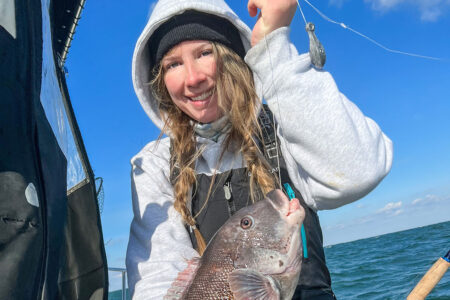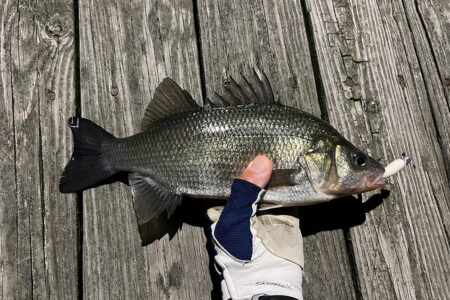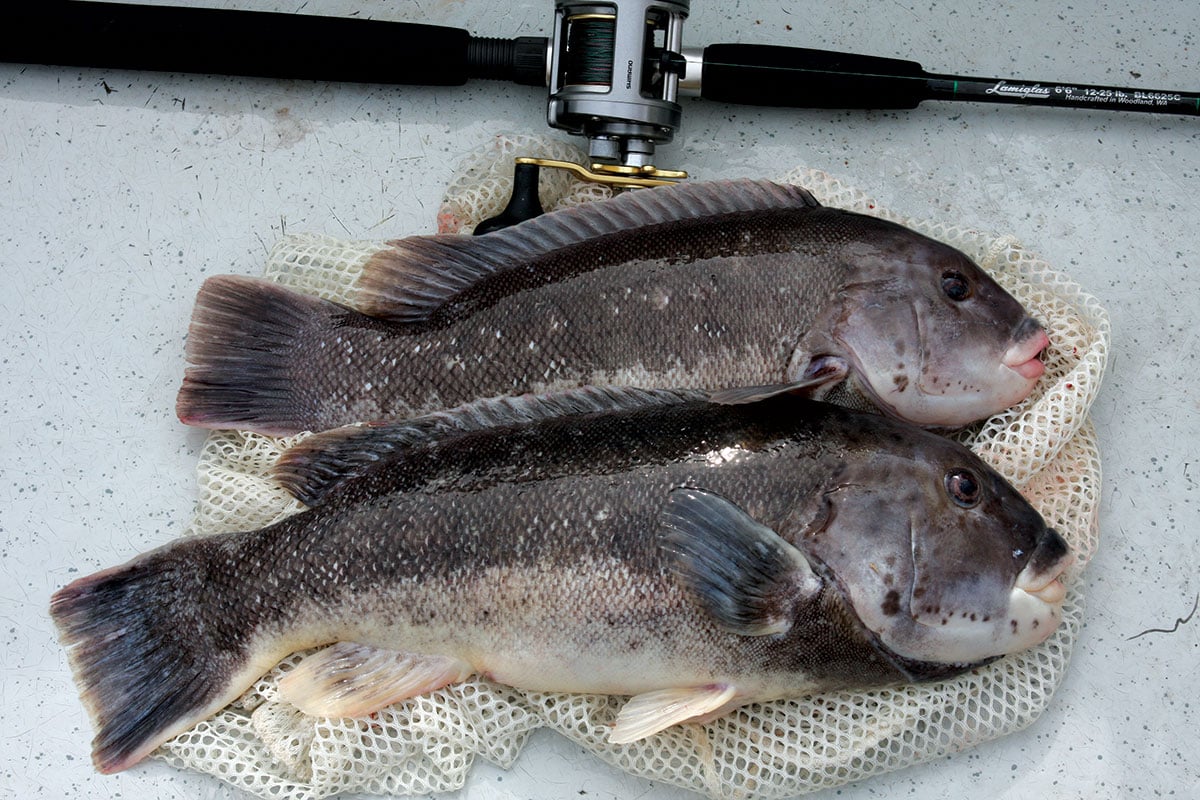
Here’s the real story behind soft baits for April blackfish.
Despite the natural limitations of the spring blackfish split-season, which is offered in some states, there’s an early opportunity for action in April. This window starts when water temperatures reach the mid-40s, with 50 degrees a goal before the first season closes. And with a mild winter behind us, the chances for an early bite are good.
Where to Find Them
Although blackfish are attracted to all types of structure, one secret for early action is to fish breakwalls and other near-shore structure rather than those traditional deeper-water reefs. Breakwalls around many harbors and river mouths often hold blackfish a couple of weeks sooner than reefs. One reason is because they’re located beside shallow harbors and estuaries, which warm first. Reefs are located in deeper, colder water and take longer to heat up. But that’s not the only reason breakwalls warm faster.
“Breakwall rocks are black,” said Pete DeGregorio, local blackfishing expert and owner of Dee’s Bait and Tackle in New Haven, Connecticut, “and unlike reefs, their tops are above water. The rocks heat up from the sun, and keep the water around them a couple degrees warmer. It really makes a difference.”
Blackfish use a “scan-and-pick” feeding pattern, which allows them to canvas an area for food. They grab “attached” forage like mussels and barnacles with their front teeth and tear them away from their base with lateral head shaking. Small prey such as juvenile crabs are swallowed whole. But larger, hard-shelled forage is first crushed by their pharyngeal teeth (located in the rear of the throat) before swallowing. Blackfish never use their front teeth in the food-crushing process. A tautog’s mouth can accommodate larger clumps of mussels than the pharyngeal teeth can crush effectively. When that happens, blackfish eat and then spit out the clump, thereby separating it into smaller, more crushable sizes. But does this aggressive feeding technique also happen in early spring?
Tog anglers have long believed that when blackfish develop a soft membrane around the outside of their mouths in the spring of the year, that the red area is skin being shed in place of tougher skin, and the fish can only eat sandworms or other soft foods during this time. However, that myth is changing, and many fishermen now feel the redness is actually just irritation caused by feeding during the winter among rocks and barnacles. Although blackfish will gobble a sandworm if it’s handy, tog pros have proven that blackfish are just as likely to inhale a split green crab in April. But myths start for a reason.
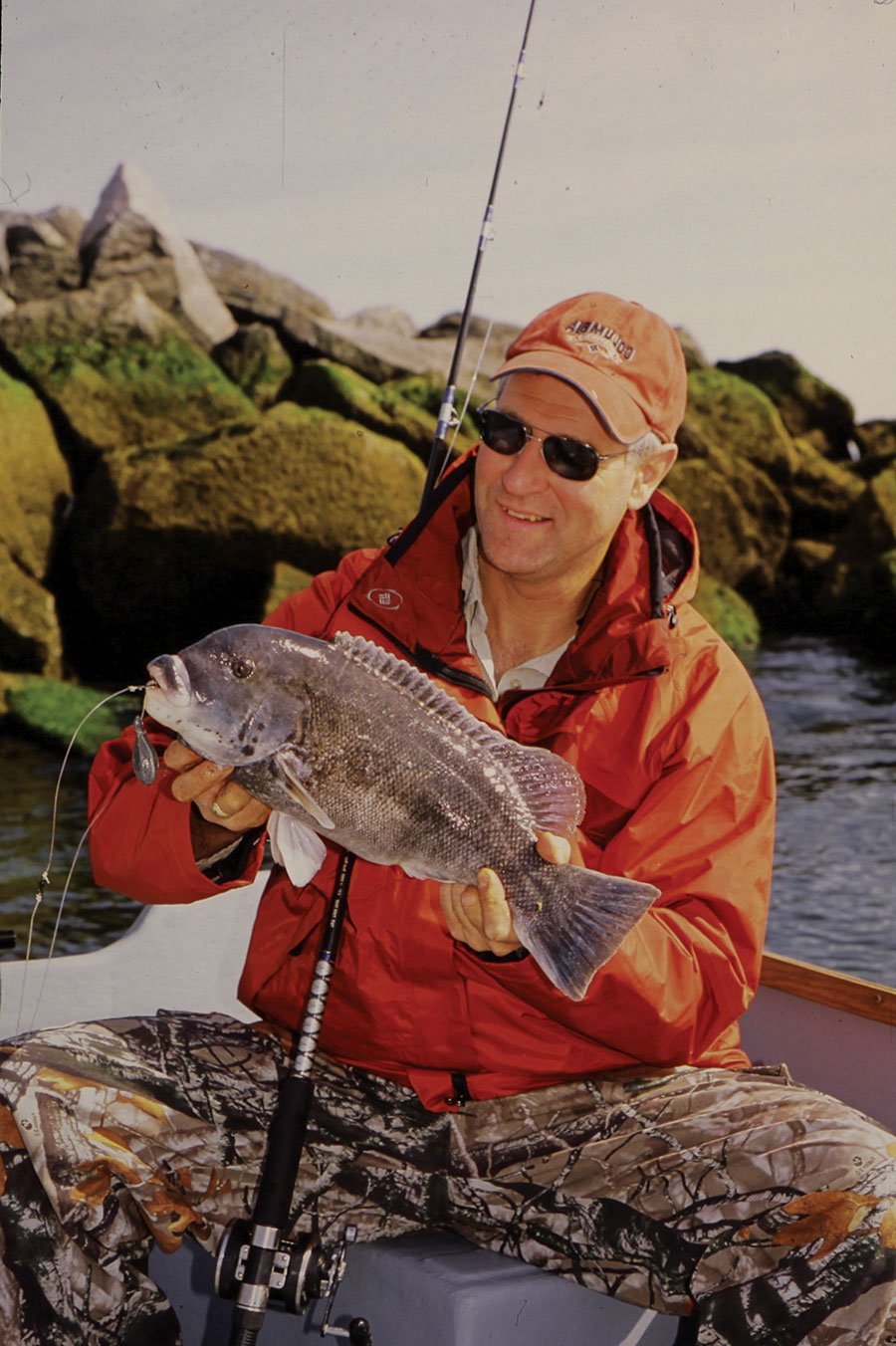
Going Soft
The reason soft baits work so well in spring is probably because there are so few bait stealers to contend with. In the fall, blackfish have to compete against swarms of porgies and small sea bass, which tear apart a soft bait before a blackfish can even find it. And it only makes sense that it’s easier to hook a blackfish on a soft bait because there’s no hard crab shell in the way. Soft baits also don’t get “washed out” by the current, which often leaves only a hollow shell on your hook.
The top bait choices of many spring tog sharpies are hermit crabs or fresh clams cut into strips with a belly portion left on. The main difficulty with hermit crabs, however, is that they’re difficult to acquire. Tackle shops usually sell out of them as fast as they get them in. One option is to befriend a local lobster or conch fisherman, and buy them from him before they reach a bait shop. Of course, nothing beats a fat sandworm on a hook, which you can tip with a small squid piece to help it stay in place.
Few fishermen know this secret: Shrimp make excellent spring blackfish bait! Shrimp also make a great “back-up plan” in case you run out of fresh bait. Buy bags of raw, frozen 40/60-count shrimp at any supermarket. Keep them frozen on ice in your cooler, and when needed just throw them in a bucket of water—they thaw quickly. And whatever amount you don’t use you can refreeze.
To hook a shrimp, break off the tail and thread it head-first onto the hook. Slide it all the way up onto the shank so the shrimp is straight, rather than bent around the barb. That hooking technique, along with removing the tail, prevents the bait from spinning in the current like a propeller, which is important for presentation. A good hook choice is a 1/0 Gamakatsu baitholder style, such as snelled by Fin Strike in its Pro-Series sea bass hooks. But a little-known trick is to reduce each hook’s leader length by half—easily done by tying a figure-8 loop knot at the midpoint and snipping off the excess—to reduce hang-ups and lost fish in boulder holes.
Although most tog anglers believe in chumming, it is a waste of time and chum material in deep or fast water because the shells drift far away from your hooks before reaching bottom, and can potentially draw fish away from your boat. But when you’re working springtime shallows like breakwalls, drop any shells overboard so they settle as near your hooks as possible.
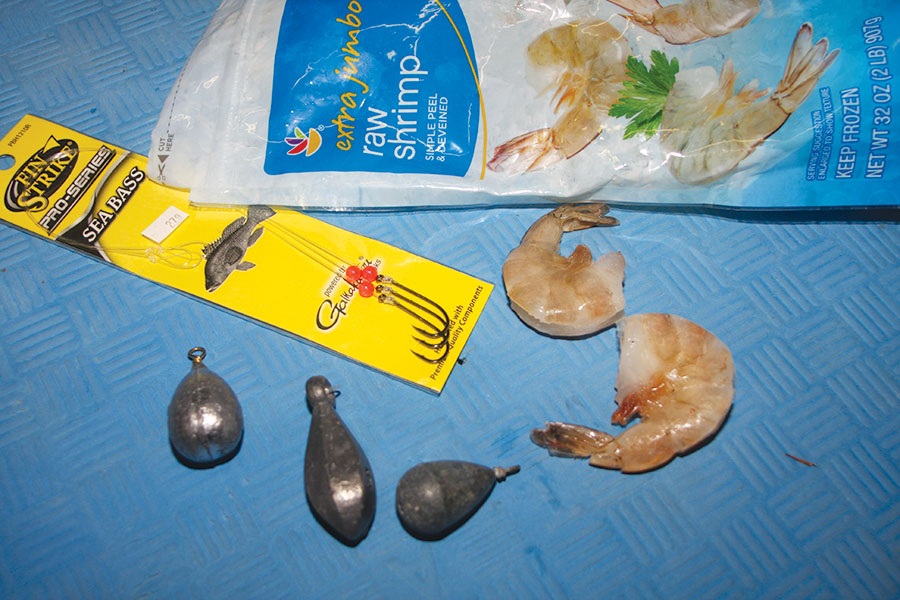
The Proper Hook-set
How you set your hook matters, too. Transitioning from that familiar “tap-tap” to a solid hook-up is especially challenging for novices. When you feel these taps, don’t suddenly react and yank up hard and fast as many tog fishermen do. That will only result in precarious lip hooks or missed bites. The trick is not to strike at the first taps when they are grasping your bait, but rather during the transfer to their rear crushers. Waiting too long to set the hook, however, may result in your bait-less hook being sensed and expelled.
After you feel the tap, drop your rod tip a bit so the fish ingests the hook without feeling tension from the rod. He won’t panic yet, so he won’t dash for cover. Give the fish a few seconds and then start with a slow rod lift. Once you feel the fish’s weight, continue lifting through the hook-set by extending your arms skyward—or even standing up—to lift the fish from its lair in the structure. At this point, your drag should be set tight so a bulldog can’t strip line and run for cover in the boulders. Once you’ve cleared the structure, however, you can back off on the drag a bit, if needed, and fight him accordingly.
“Lower your rig into a hole,” said tog expert Rich Haigh, “and then wait for a bite with a tight line. Keep a thumb on the line to help detect subtle bites, which are easily telegraphed through superbraid.”
Dropping your baits into a populated hideaway is only half the trick. The bigger challenge is hooking and then wrestling the fish out of the hole. Once hooked these strong, stubborn swimmers dash for the nearest cranny and are then almost impossible to pull out. This is where technique comes into play.
“The key,” said Haigh, “is once you feel a nibble, don’t strike hard like most guys do. Instead, lift the rod tip slowly and gently as high as you can. Your rod will bend from the weight of the blackfish, but if you do it right the fish doesn’t realize what’s going on. But get ready. When you finally lift the fish from the structure it goes crazy—and the fight is on.”
Non-stretch braid provides an instant hook-up, even with a lighter rod tip, and allows the use of smaller sinkers that don’t work against you when striking. That combination maximizes feel for both you and the fish, which is a key to successful blackfishing. A lighter and faster-action rod tip than normal also provides some security against pulled hooks on braided line as well as a more sporting experience when going soft for spring tog.
Breakwall Anchoring
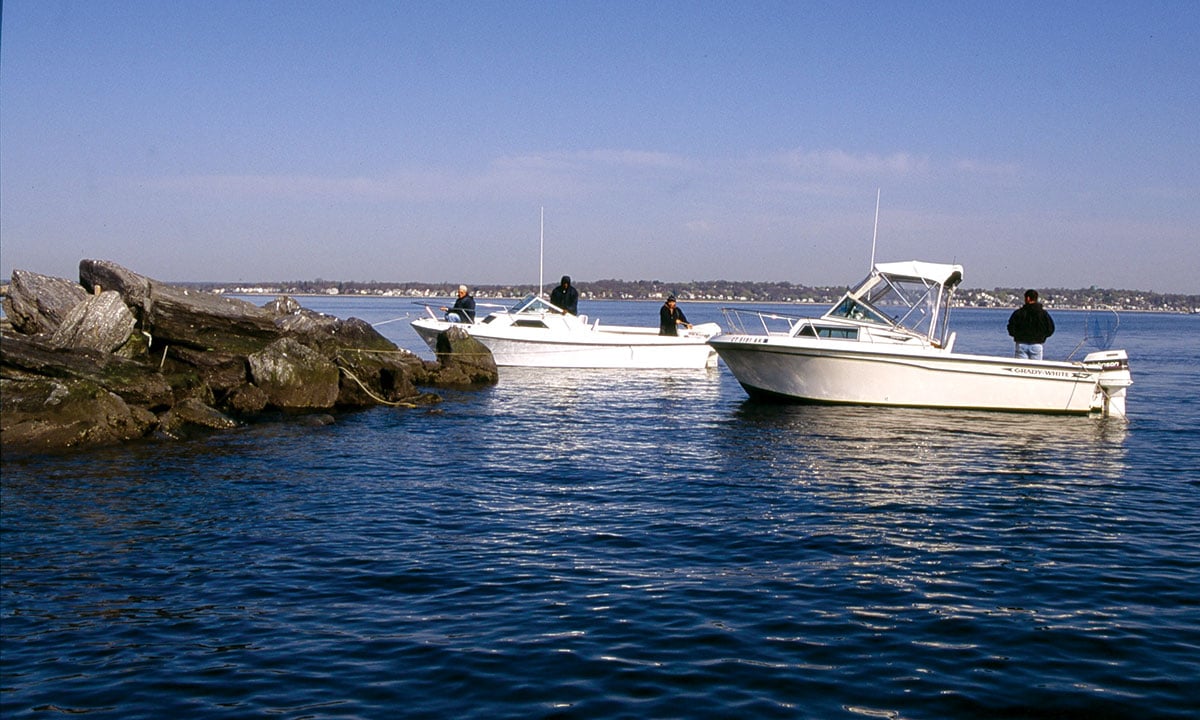
There is an art to properly “anchoring” on a breakwall, and no matter how many times you’ve done it you should always proceed with caution. Begin by securing your anchor off the stern at least 100 feet (or more) from the wall. Once the anchor is set slowly ease the boat towards the wall—bow first—with one person keeping hold on the anchor rode run through a cleat. In an emergency the anchor man should be able to immediately stop the forward progression of the boat by wrapping the anchor rode on the cleat. Once within range, the bow man tosses a light rope with weight, like a small section of chain, into the rocks. When the light rope bites into the rocks set the position of the boat between the bow and stern lines a safe distance off the rock wall and begin fishing. You can adjust the boat’s position by taking in or letting out the two lines. At the end of the day, cut the light rope off as close the wall as possible and ease back towards the anchor.


